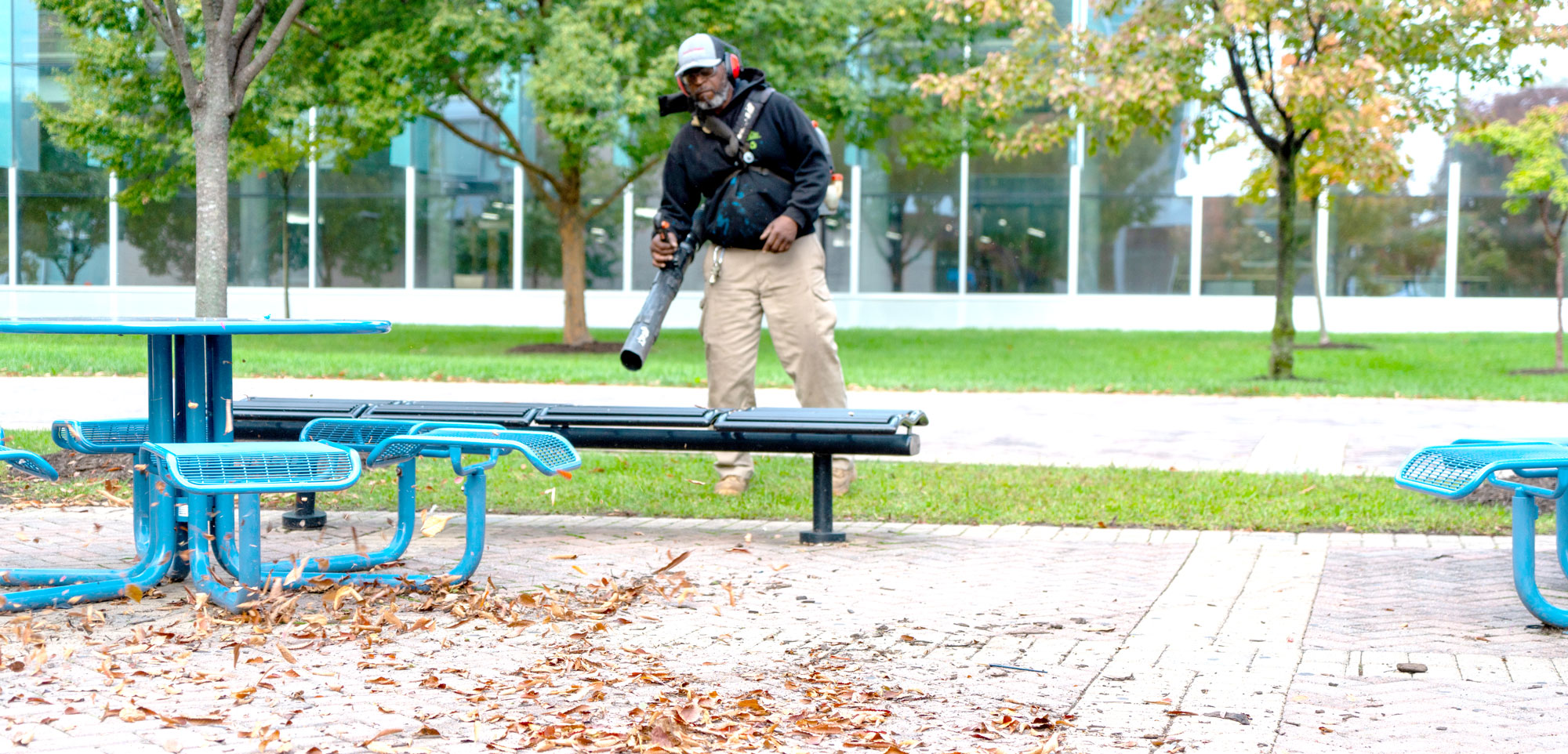By: Larry Jones
Excellence in Campus Care Promotes Morgan’s Success
I’ve said to the groundskeepers that, ‘I want you to think about your grounds work as if it is a canvas. And you are one of the best artists in the world producing a work of art for thousands of people to admire.’
– Morgan President David K. Wilson
It is estimated that freshly mowed grass grows back at about 0.8 inches per week, or about an inch or more per week with favorable weather. So a lawn should be mowed every seven to 10 days, some experts say, depending on the season, grass type, rainfall or other related factors.
However, a popular and often humorous belief among Morganites is that the groundskeepers at Morgan State University cut the grass daily, igniting their mighty mowing machines at the faintest hint of new growth. Amused by the claim, Gerard Zeller, the manager of grounds, landscaping and recycling at Morgan, sets the record straight.
“We try to maintain each area of our property where it would receive one cut in a seven-day cycle. So once a week, if you will,” said Zeller. “During the spring, that may increase because we’re getting more top growth. And then during the fall, it might drop slightly because our growth has decelerated. But it’s not every day.”
Lawn and Order
The legend of the daily cut may not be accurate in fact, but like many such stories, it has a foundation of truth.
In the real estate world, the vernacular du jour is “curb appeal.” It can mean the difference in whether a property’s outward appearance makes a good enough impression to entice a sale. A well-kept lawn or a pristine exterior paint job can enhance a property’s curb appeal, potentially even increasing its value. Morgan State University has curb appeal to spare. Just ask anyone who has spent time on the campus of Maryland’s largest HBCU over the past decade, and their recounting of the experience reveals what many have come to accept: Morgan has a beautiful campus. And a major contributor to its beauty is its grounds.
In 2010, Morgan welcomed David K. Wilson as the University’s 10th inaugurated president. Wilson, who had spent the bulk of his years in higher education administrative leadership roles at several larger, predominately white institutions (PWIs) around the country, had become accustomed to those universities’ investment in the upkeep of their grounds. He noted how something as simple as proactive campus beautification efforts yielded positive results that could be seen in such things as enrollment, work and school pride, mental health and a strengthening of the connection to the institution.
“The college campus should be a place that is aesthetically pleasing and appealing,” said Wilson. “People who are visiting your campus make an instant decision as to whether this is the type of place that they want to attend themselves or if they want to send their son (or) daughter to. And if the curb appeal is not there, then I don’t care what else there is to offer; people will leave that experience thinking this is a place that no one cares about.”
Regarding Morgan’s campus grounds during the early stages of Wilson’s presidency, he saw the history, the culture and the means for improvements, but more importantly, he saw the potential. All that was required were the right push and a new outlook to inspire transformation.
If you love your work, it’s not work. You love what you do.
– Gerard (“Zell”) Zeller. ’08
Manager of Grounds, Landscaping and Recycling
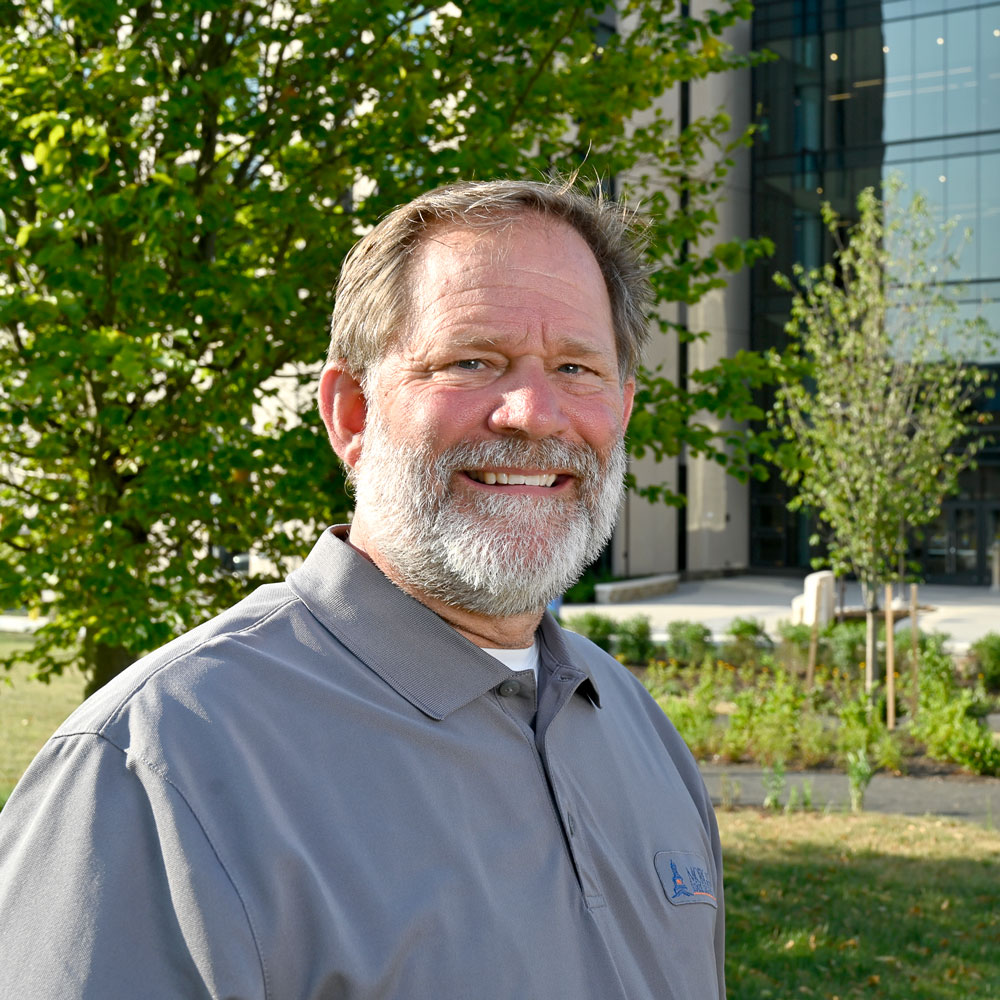
‘Beautification Is Everything’
Morgan’s main campus consists of approximately 143 acres, with up to 30 acres of that footprint comprising lawn and landscaping areas that need to be managed. The predominant grass type found on campus is tall fescue, which is ideal for Baltimore’s climate, Zeller says. It has the longest growing season, offers the best color performance and can handle heavy foot traffic.
Zeller, or “Zell” as some know him, is an arborist by trade and knows a thing or two about horticulture. Recipient of a bachelor’s degree in industrial design from Carnegie Mellon University, and a master’s in Landscape Architecture from Morgan’s School of Architecture and Planning in 2008, he has owned and operated a landscaping business for more than 30 years.
After graduating from Morgan, Zeller returned to his alma mater to assume the evolving role of landscape tech supervisor and grounds manager. Today, he oversees the maintenance and upkeep of the campus grounds, including snow removal, and manages a staff of nearly 20. One of those staff members is the supervisor of the Grounds Department, James (“Jimmy”) Thomas.
For more than 35 years, Thomas has contributed to the transformation of Morgan’s grounds, tending to the campus as if it were his own.
“In the beginning, you had to feel your way and play a part in how the campus was going to look, because beautification is everything,” says Thomas.
Included among a variety of responsibilities, he and his team of five handle the grass mowing and manage snow clearing and pre-commencement and post-homecoming cleanup. With thousands of visitors and guests expected to traverse the campus during both high-profile events, Thomas’ team is usually found prepping the campus by mulching, planting shrubs, if need be, or pruning trees. The result adds to the majesty of the occasions and is usually photographed unassumingly in the background of captured moments.
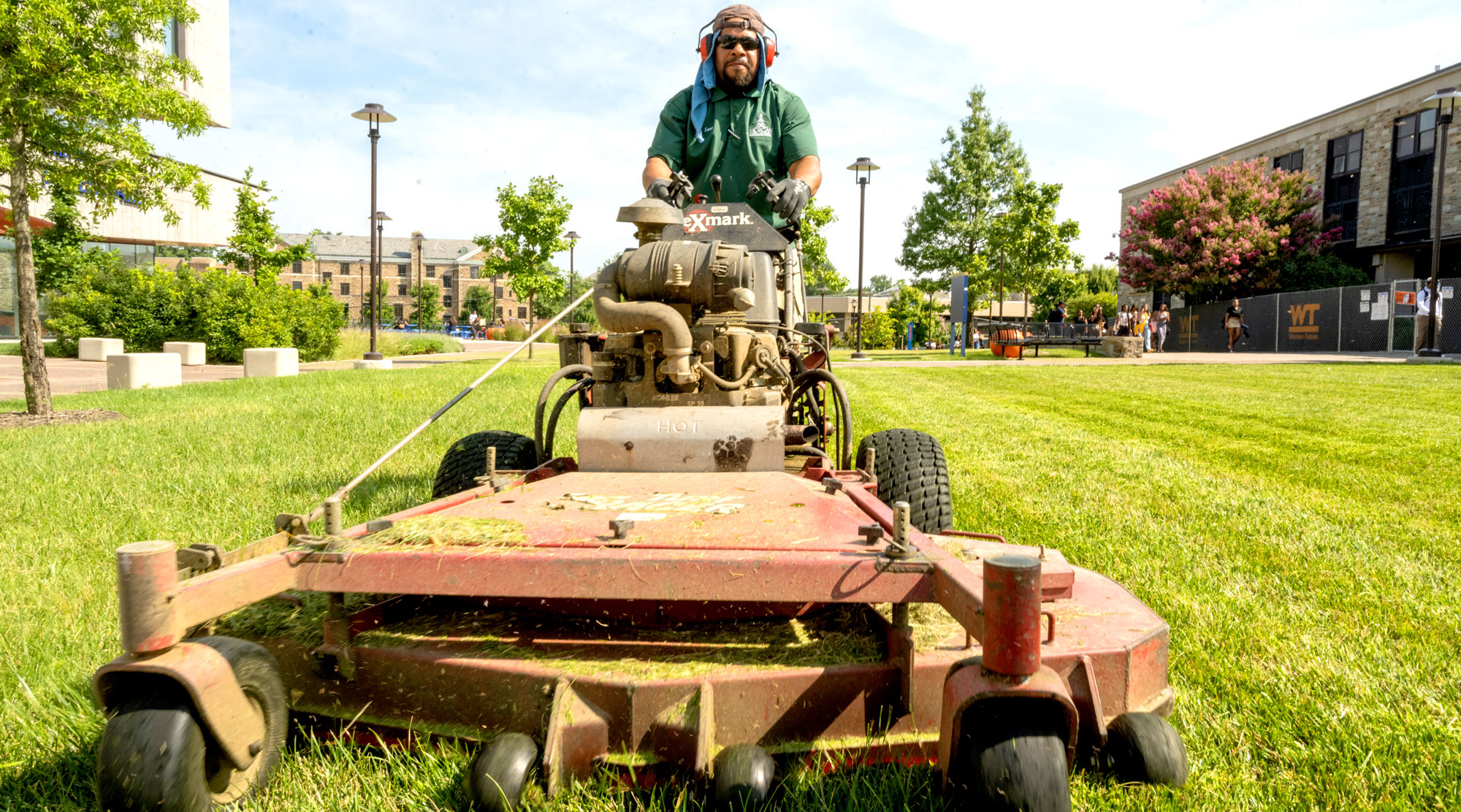
‘A Work of Art’
When it comes to committing to the upkeep of Morgan’s grounds, Thomas considers himself somewhat of a trailblazer: “I worked from the ground up, from a groundskeeper to supervisor, and I’ve seen the transformation of the campus.”
“People ride by and see us taking care of what we need to take care of on the grounds, and they appreciate the effort,” Thomas says. “It’s never a situation where it looks like we haven’t done anything.”
One of those grateful observers is President Wilson.
“I’ve said to the groundskeepers that, ‘I want you to think about your grounds work as if it is a canvas. And you are one of the best artists in the world producing a work of art for thousands of people to admire,’” says Wilson.
Wilson describes the artistry of the groundskeepers at work as a joy to watch. He also senses that they, too, realize they are doing more than just cutting grass. Michael (“Malik”) Rucker, grounds lead worker, agrees.
“How the grounds and the campus look, ultimately reflects how people feel about the education they might receive here,” offers Rucker, who has been with the University since 2004. “The way the campus looks, when it’s beautiful, makes you feel great.”
Rucker has long been one of the unsung heroes President Wilson has lauded publicly whenever able. Last October, during Morgan’s Office of Human Resources Service Awards Ceremony, Rucker was recognized for his first 15 years of service, and President Wilson was more than happy to share some words for the man of the hour and the job he’s done over the years.
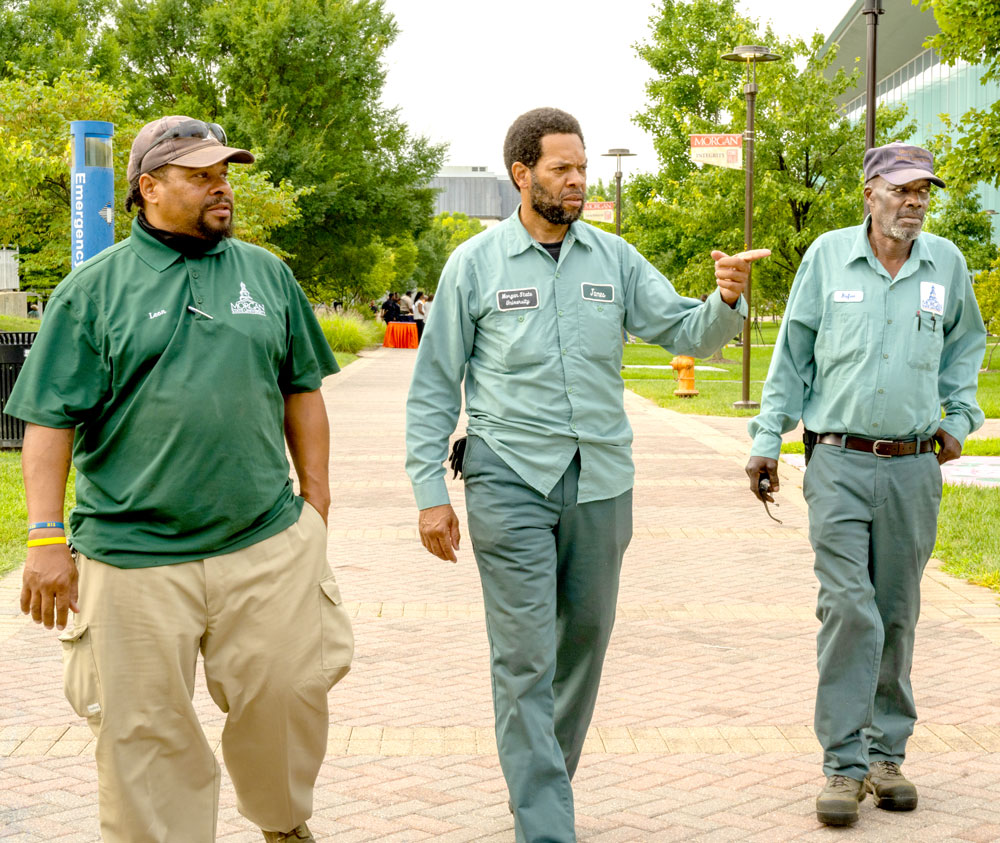
People ride by and see us taking care of what we need to take care of on the grounds, and they appreciate the effort.
– James (“Jimmy”) Thomas
Morgan Grounds Department Supervisor
Cultural Change
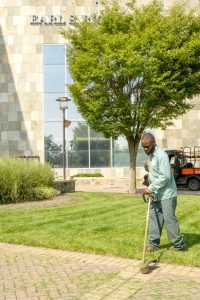 Under President Wilson’s initial strategic plan for the university, campus beautification was a focal point. With the transformation of the grounds over the years, he assumed that the lush green lawns would become attractive ideation spaces or, at a minimum, that they would beckon students to grab blankets and enjoy the beautiful spaces the grounds crew had created. In his eyes, this was an ideal opportunity to take advantage of learning opportunities beyond the classroom by leveraging aesthetically pleasing outdoor environments.
Under President Wilson’s initial strategic plan for the university, campus beautification was a focal point. With the transformation of the grounds over the years, he assumed that the lush green lawns would become attractive ideation spaces or, at a minimum, that they would beckon students to grab blankets and enjoy the beautiful spaces the grounds crew had created. In his eyes, this was an ideal opportunity to take advantage of learning opportunities beyond the classroom by leveraging aesthetically pleasing outdoor environments.
At many of the nation’s PWIs, this type of occurrence is commonplace. But at HBCUs, the culture is very different. There is an unwritten rule at many Black colleges and universities around the U.S. that one should never walk on the grass and never even think to play on it. That tradition, to which Morgan adheres, may stem from respect for the institution, cultural values and historical context. It has also been seen as a symbolic gesture of discipline and a point of institutional pride.
“Historically, the grounds were viewed as sacred at Morgan,” Thomas recalls. “If somebody was seen walking across the grass and not using the sidewalk, they were respectfully encouraged by other students to get off the grass.”
Today, the culture at Morgan is beginning to change, as more students embrace the scenic lawn spaces as their own — places where they can work on assignments, take a mental break, read or do yoga. Apprehension about being on the grass is steadily diminishing, while the concept of the campus as hallowed ground remains.
“Most mornings, I walk around the campus, and all I can say is, ‘Wow,’” said Wilson, with pride. “The grounds are just beautiful — well-manicured lawns, cleaned-out flower beds and perfectly pruned trees, hedges and shrubbery.”
Approximately 10,000 people travel along Perring Parkway and Hillen Road daily, passing Morgan’s ever-growing campus. Some percentage of those travelers ventures onto the grounds of the National Treasure, where they can take in the beauty firsthand and witness the professionalism of the groundskeepers as they engage in their artistry.
Zeller doesn’t mind if those thousands of travelers never make it onto the campus, because he believes that even if they just ride by and the place looks good, the campus will make a strong impression. This positive viewpoint and a commitment to craft have kept him and his team loving their contribution to Morgan’s elevation.
“If you love your work, it’s not work. You love what you do,” Zeller adds. “But if you can have that experience in a setting where you’re surrounded by family all the time, that’s priceless.”
